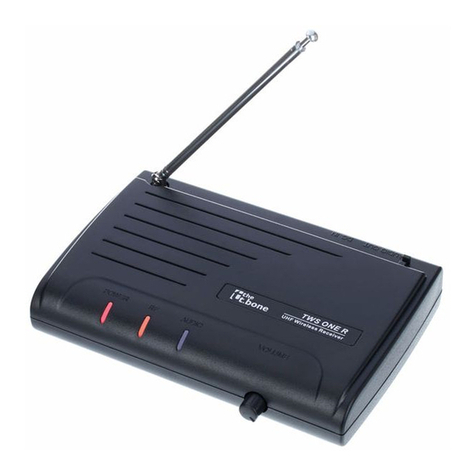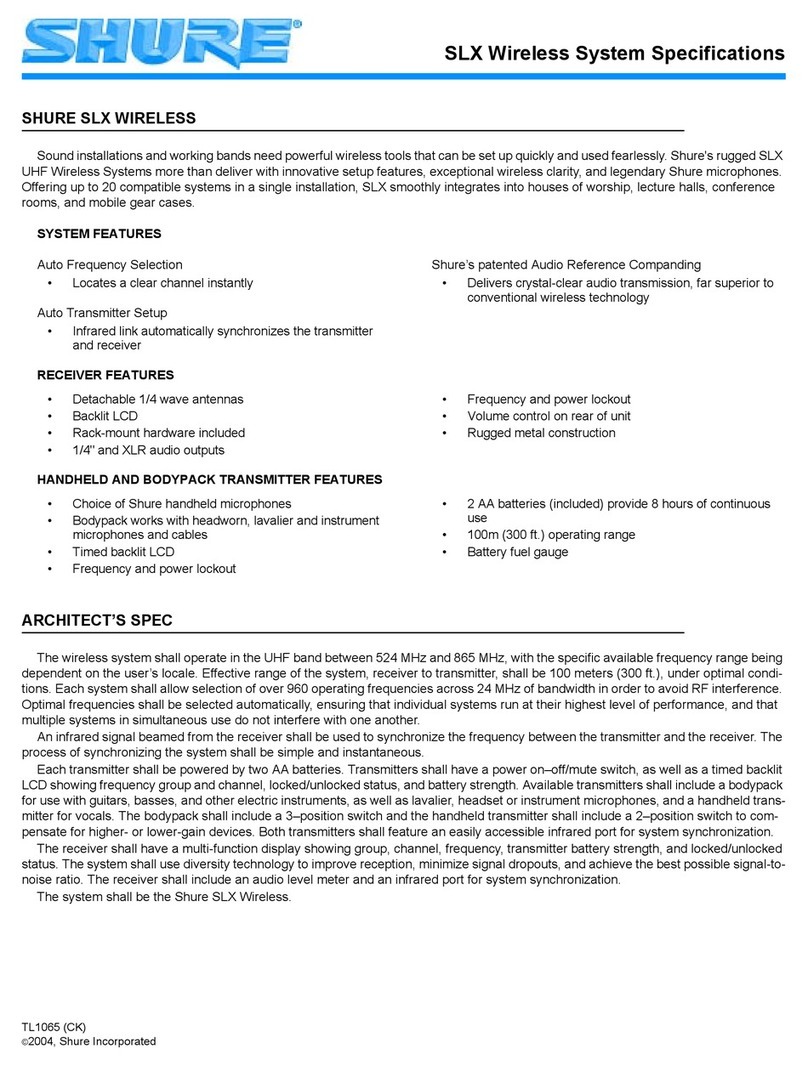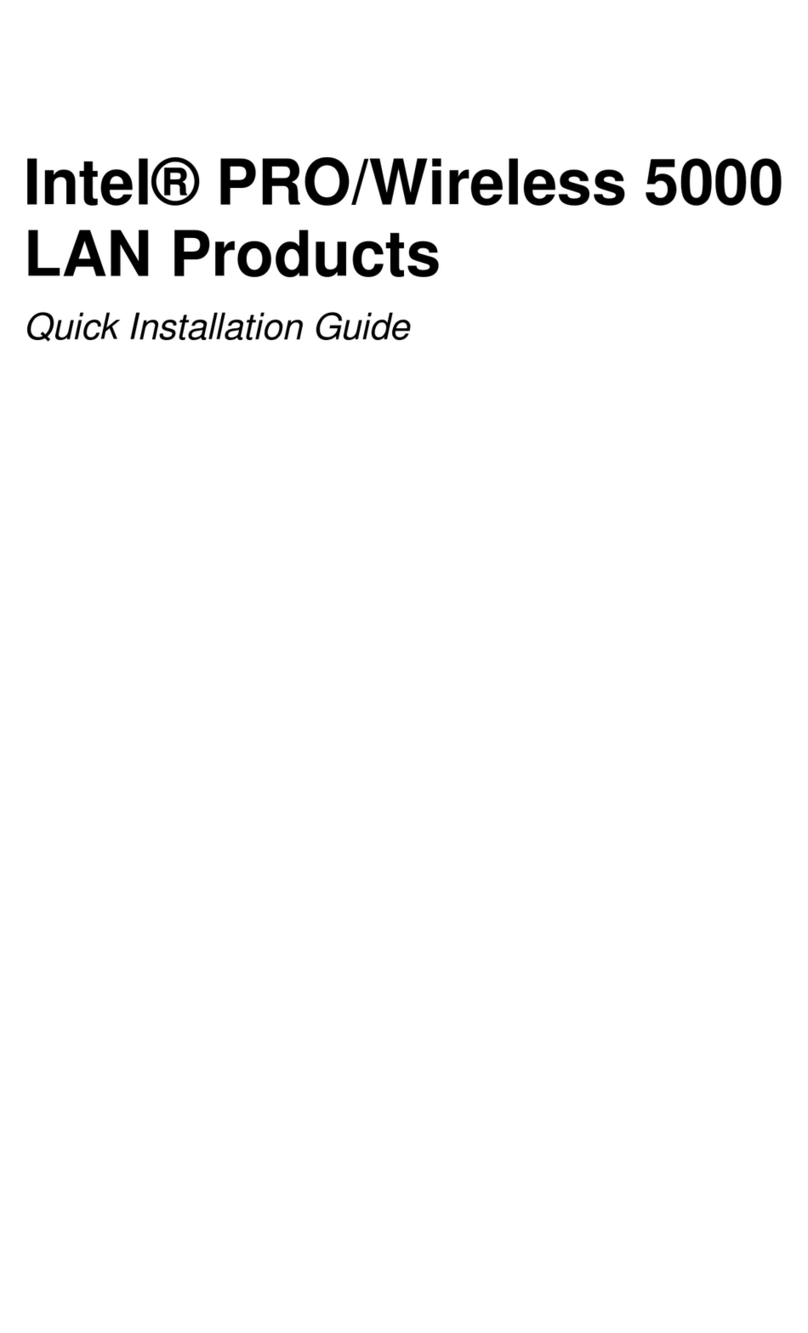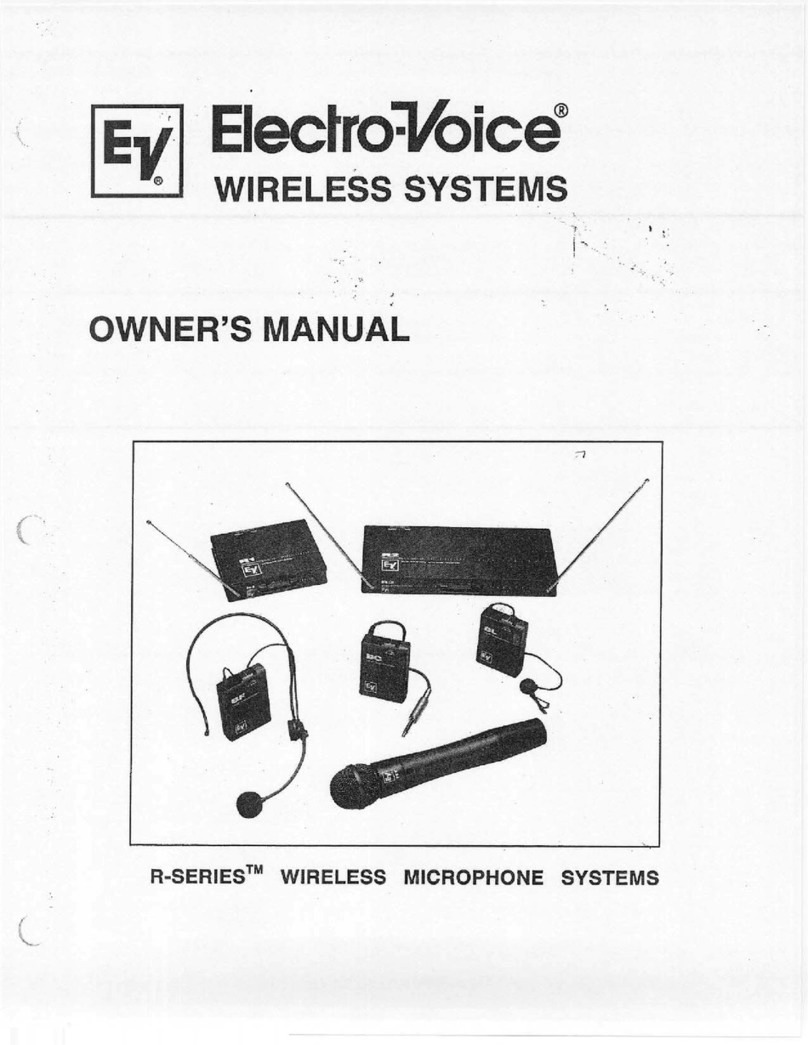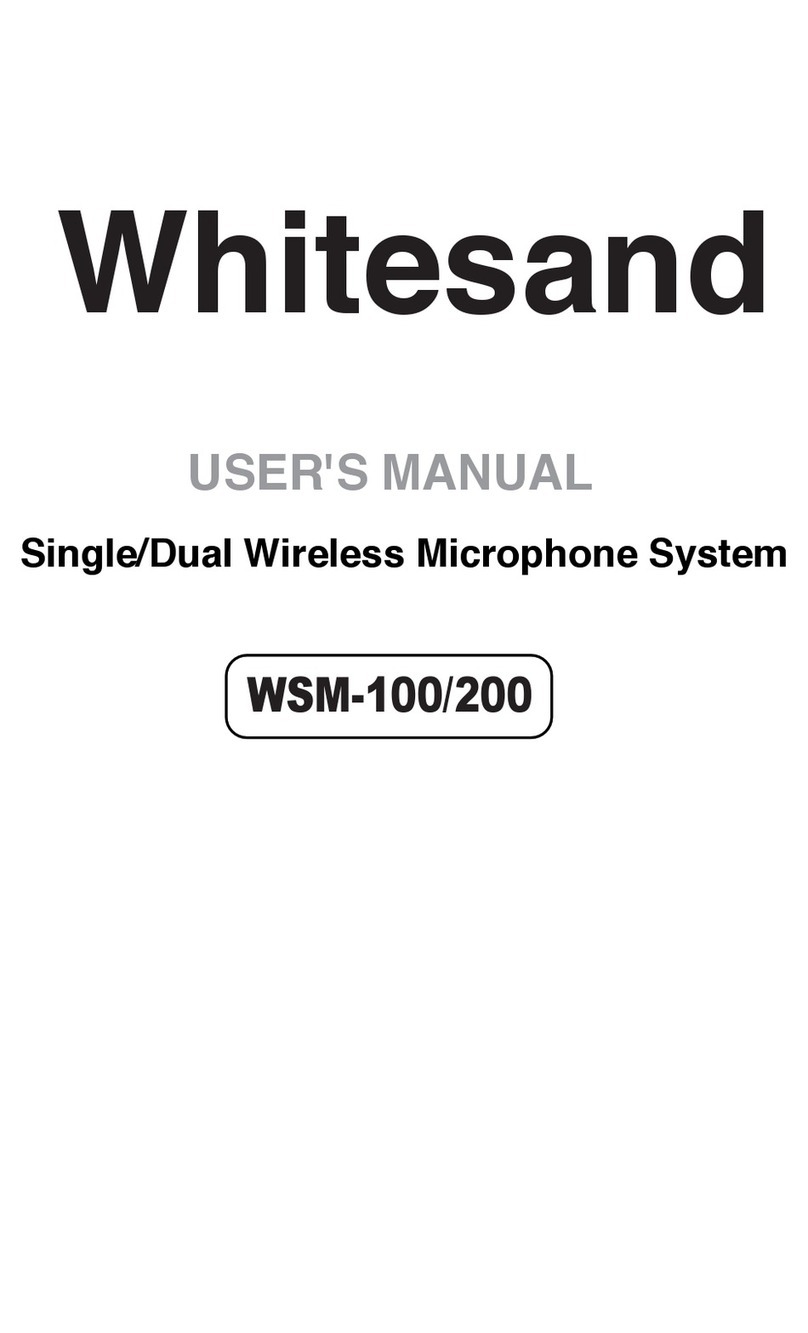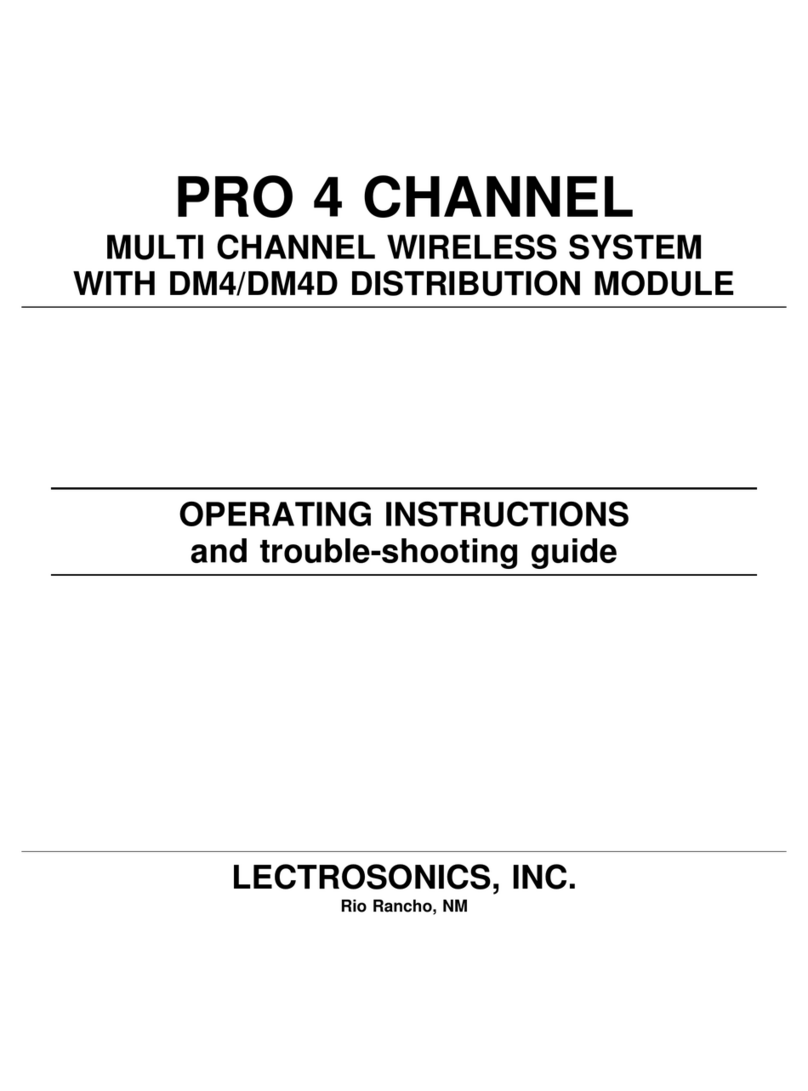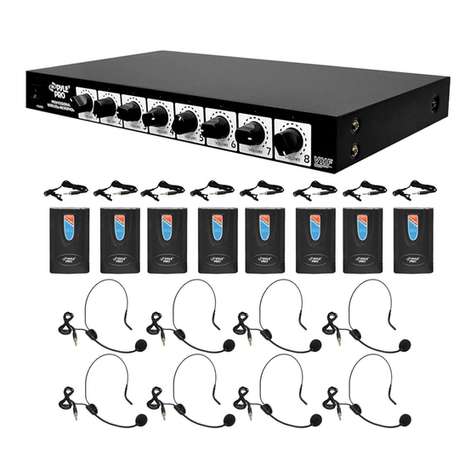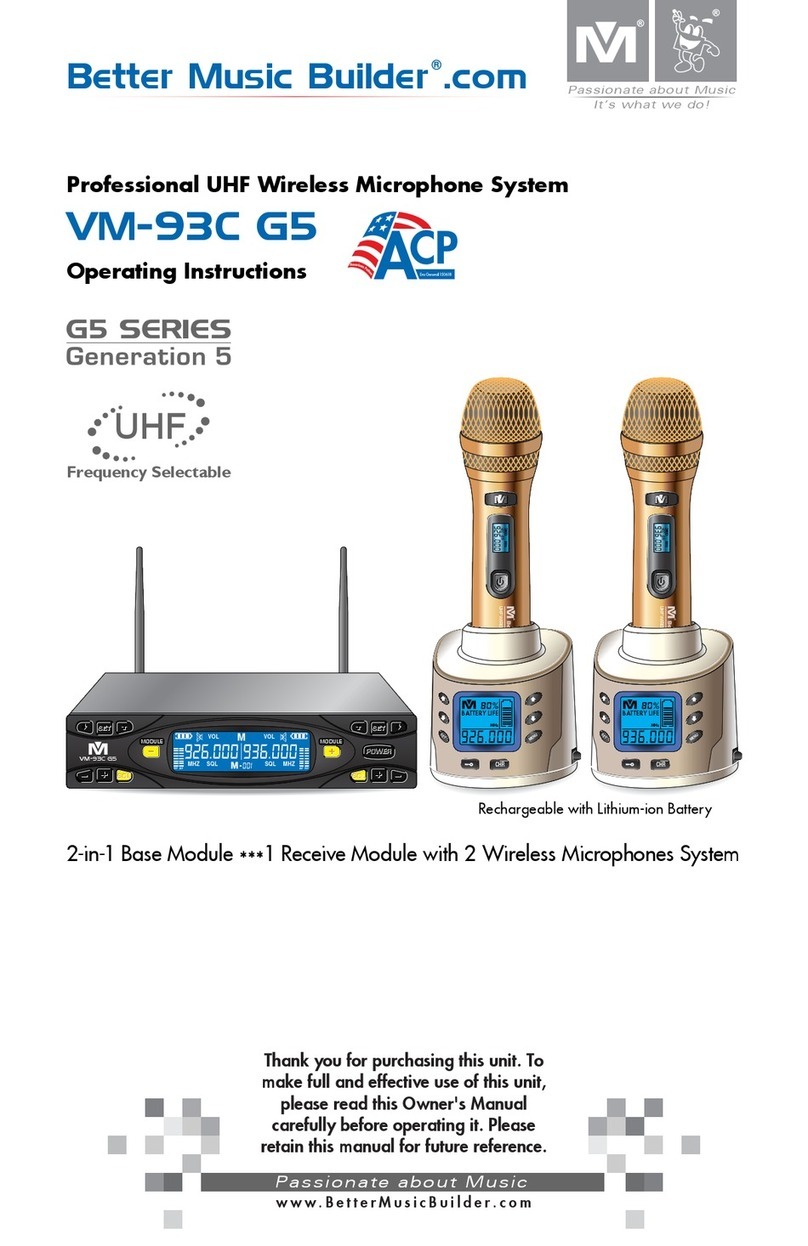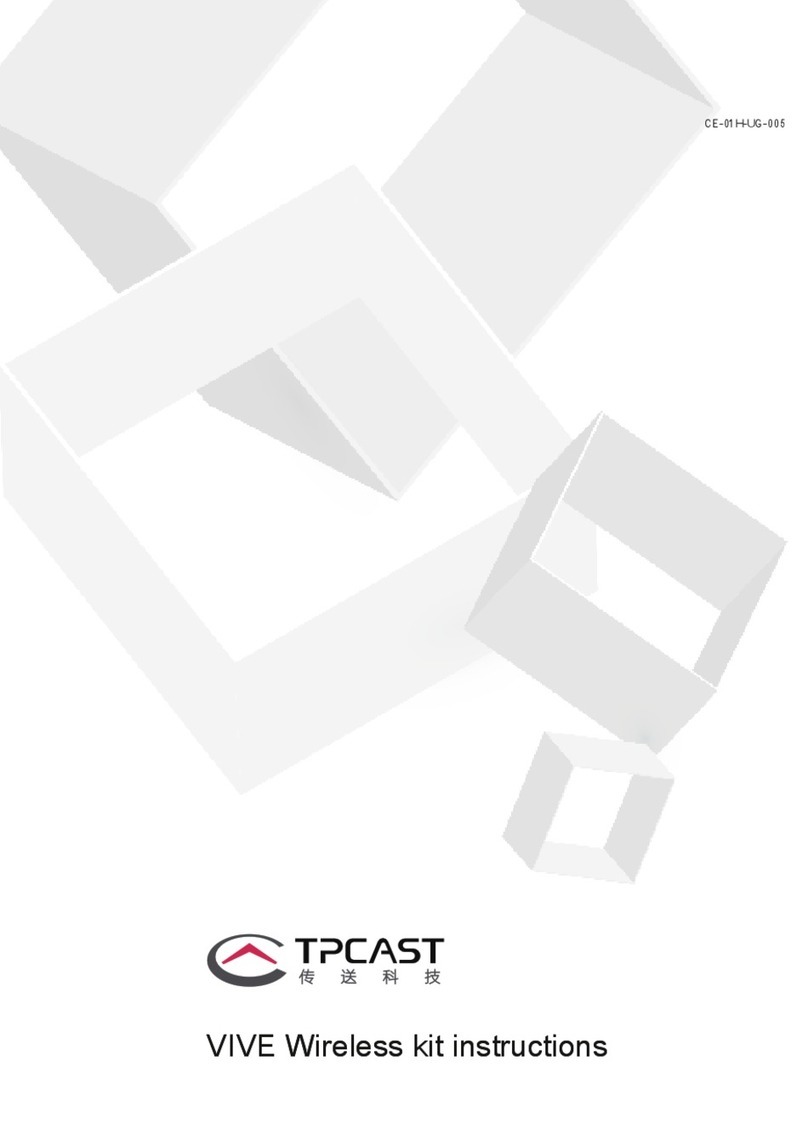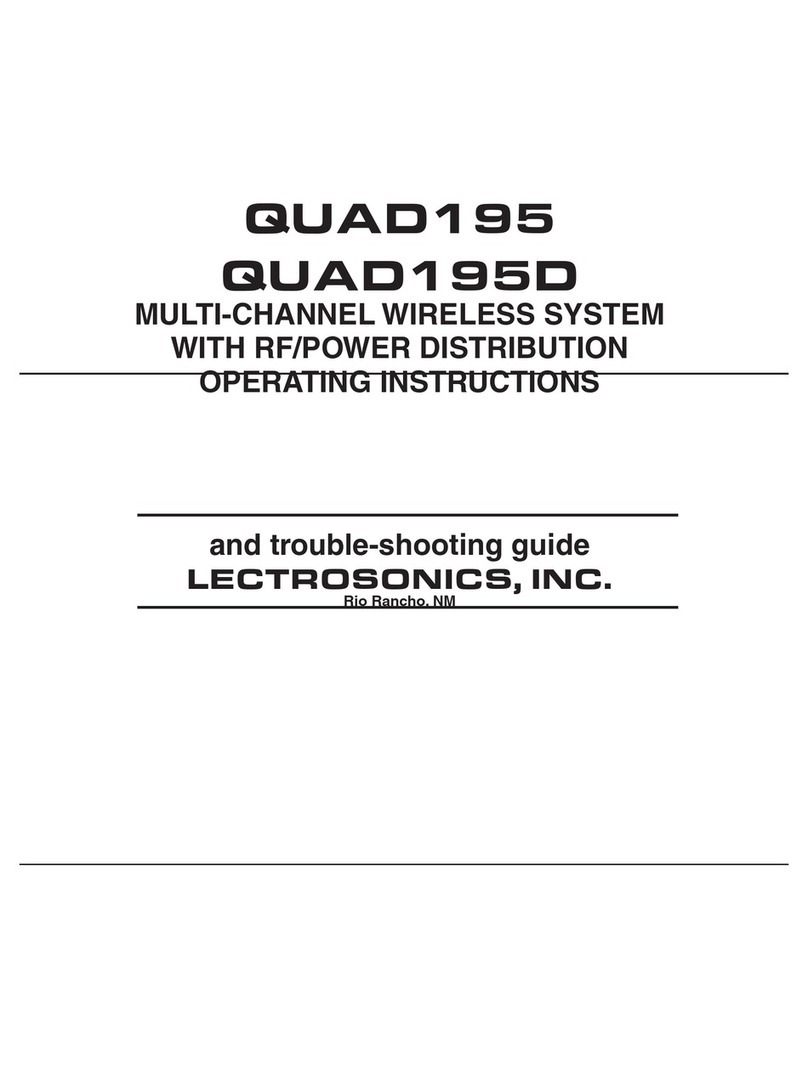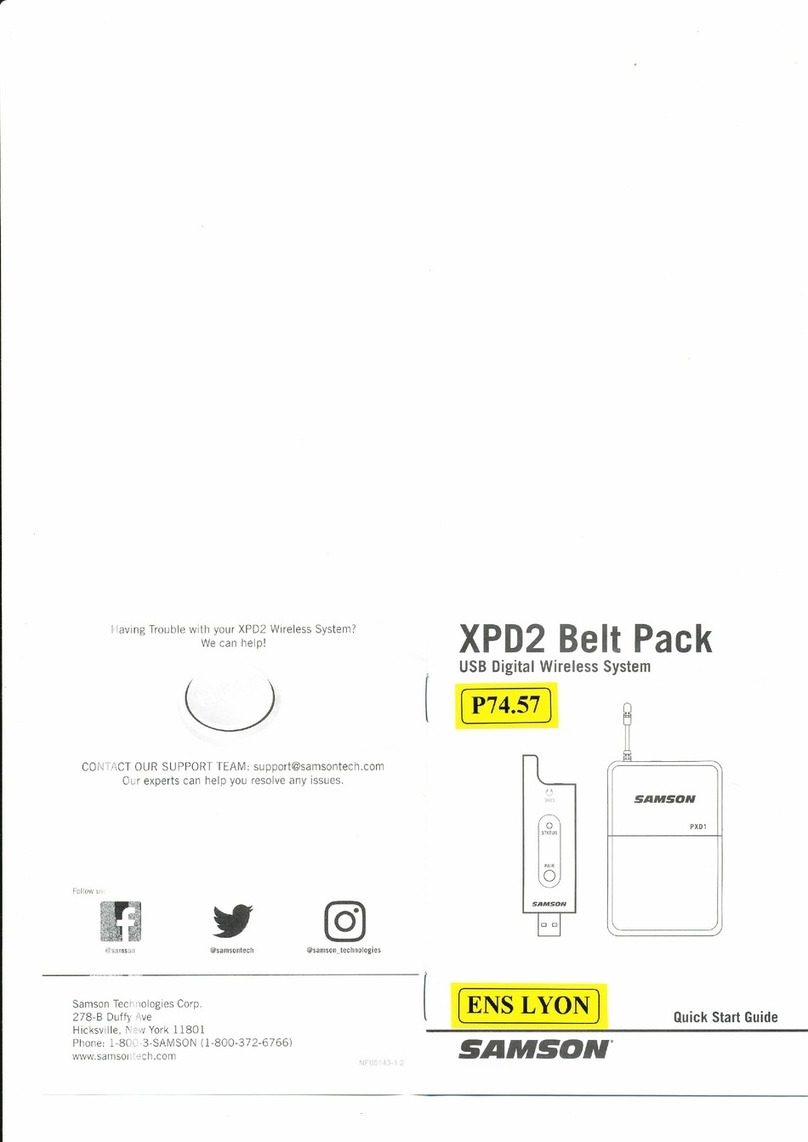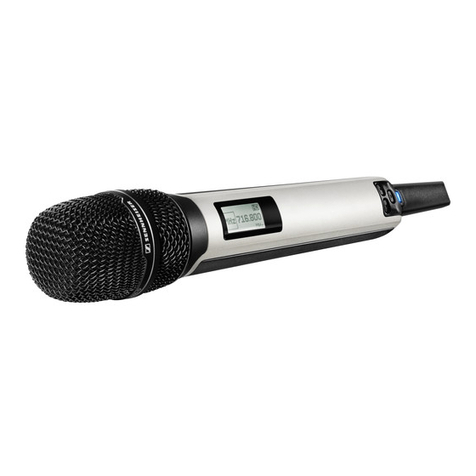Huawei OptiX RTN 980L V100 User manual

HUAWEI TECHNOLOGIES CO., LTD.
Address: Huawei Industrial Base
Bantian, Longgang
Shenzhen 518129
People's Republic of China
Website: http://www.huawei.com
Email: [email protected]
No part of this document may be reproduced or transmitted in any form or by any means without prior
written consent of Huawei Technologies Co., Ltd.
and other Huawei trademarks are trademarks of Huawei Technologies Co., Ltd.
All other trademarks and trade names mentioned in this document are the property of their respective
holders.
The purchased products, services and features are stipulated by the contract made between Huawei and
the customer. All or part of the products, services and features described in this document may not be
within the purchase scope or the usage scope. Unless otherwise specified in the contract, all statements,
information, and recommendations in this document are provided "AS IS" without warranties, guarantees
or representations of any kind, either express or implied.
The information in this document is subject to change without notice. Every effort has been made in the
preparation of this document to ensure accuracy of the contents, but all statements, information, and
recommendations in this document do not constitute a warranty of any kind, express or implied.
Issue 03
Date 2019-12-31

Safety Precautions
General safety precautions
To ensure human and equipment safety, observe all the safety precautions marked on the equipment and
provided in this document. The , , and marks in the document do not cover all
the safety precautions that must be followed; they only supplement general safety precautions as a whole.
When performing operations on Huawei products or equipment, strictly observe related safety precautions and
special safety instructions. The safety precautions in this document are only some that Huawei can predict.
Huawei is not liable for any consequences that result from violation of common safety regulations or equipment
production and usage regulations.
Local rules and regulations
When operating a device, obey local rules and regulations.
Personnel
Installation and maintenance personnel must be trained to perform operations correctly and safely.
Device safety
Before operating a device, check the electrical connection of the device to ensure that the device is securely
grounded.
Electrostatics produced by human bodies may damage electrostatic-sensitive components on boards, for
example, a large-scale integration (LSI). Therefore, take proper safety measures, such as wearing an
electrostatic discharge (ESD) wrist strap or ESD gloves, to avoid damage to the components when
operating the boards.
When operating storage batteries, take steps to prevent battery short circuits and electrolyte overflow or
leakage. Electrolyte overflow may corrode metal parts and boards, and ultimately cause equipment rust or
board short circuits.
Elevated locations
The RTN 980L is usually installed in an elevated location, such as on the roof of a building. Adhere to the following
guidelines for installations in elevated locations:
Installation personnel must have the proper training and qualifications, and meet health requirements.
Installation personnel must wear helmets and safety belts and should work in pairs or teams.
Do not work in high places during thunderstorms, blizzards, gales, or other extreme weather conditions. When
working outdoors, installation personnel must wear clothes and gloves appropriate to the weather conditions,
and anti-slip footwear.
Hoisting tools should be tested before use.
All installation personnel and visitors onsite must wear helmets.
Hoisting heavy objects
Before hoisting heavy objects, clear the area to avoid hurting anyone
nearby.
Before hoisting heavy objects, ensure that the hoisting tools are complete
and in good condition.
Before hoisting heavy objects, ensure that the hoisting tools are fixed to a
secure object or wall with good weight-bearing capacity.
Ensure that the angle between the two lifting slings is less than or equal to
90 degrees during the hoisting, as shown in the figure.
Devices and installation components
When operating devices and installation components, wear clean gloves.
Avoid direct contact with devices and installation components with bare
hands or dirty gloves.
Corrosion
Anti-corrosion measures are required if an RTN 980Lis installed in a location that is prone to corrosion. Contact
your local Huawei office for details. A location is prone to corrosion if it is:
Within 3.7 km (12139 ft ) of an ocean or a salt water lake.
Within 3 km ( 9843 ft ) of a heavy pollution source, such as a smelting factory or coal mine.
Within 2 km ( 6562 ft ) of a medium pollution source, such as a chemical, rubber, or electroplating plant.
Within 1 km ( 3281 ft ) of a light pollution source, such as a food or leather processing plant or industrial
boiler.
Max 90°
Microwave
High-power radio frequency signals are harmful. Avoid exposure to transmissions from the antennas of
microwave equipment that has the radiation warning symbol . When you are installing or performing
maintenance on an antenna located on a tower that has multiple antennas, be careful not to exposure yourself
to radiation from the other antennas.
IF Cable
Before installing or removing an IF cable, turn off power switch.
1

Installation Precautions in a Harsh Environment
Antenna installation requirements
If glue dispensing is not done on the rivets or screws of the center plate and reflective surface of an antenna
before delivery, apply matching outdoor adhesive to them.
Apply thread adhesive to screws used for installing antennas. This can prevent the screws from becoming
loose and improve corrosion resistance.
After you finish installing screws, spread oil or spray paint on the surface of the screws.
In areas with many birds, install protective covers to prevent birds' droppings from corroding antennas.
Definition of harsh environment
Within 3.7 km (12139 ft ) of an ocean or a salt water lake
When outdoor equipment or cabinets are installed in a harsh environment, ensure that the following requirements
are met:
Branching unit installation requirements
Spread oil or spray paint onto the clamps of flexible/elliptical waveguides.
After you finish installing exposed screws, spread oil or spray paint on the surface of the screws.
In areas with many birds, install protective covers to prevent birds' droppings from corroding branching units.
IDU cabinet installation requirements
Outdoor cabinets must be equipped with heat exchangers or air conditioners.
The air exhaust vent of an air conditioner must not face equipment.
Equipment rooms must be airtight. Equipment rooms and dust filters of equipment must be cleaned regularly.
Equipment room doors must not face the wind.
Install filler panels in vacant slots of the IDU to prevent dust accumulation in the slots and corrosion caused by
salt fog.
2

h2
120mm (4.7
in)<h1<180mm (7.1 in)
h3
One-pole installation
Space
r
Flexible
waveguid
e
1.8 m
(5.9
ft)
flexible
wavegui
de
Flexible
waveguid
e
Two-pole installation
Site Preparation
Pole requirements
A pole must meet the following requirements:
A pole must be able to withstand the total weight of the antenna, branching uniting, and RFU.
The diameter of a pole is 114 mm ( 4.5 in.).
The pole length varies depending on the branching unit and antenna installation mode. The flexible waveguide length
also varies accordingly. For details, see the table below.
When installing a branching unit and an antenna onto one pole, adjust the distance (h2) between the branching unit
and antenna based on the antenna diameter to ensure that the branching unit does not block the antenna during
antenna alignment.
If three BUs need to be installed on a pole, the spacing between the upper and lower BUs must be greater than or
equal to 0.3 m. The actual spacing can be adjusted based on the length of the flexible waveguide.
If the antenna is far from the branching unit, connect them using two flexible waveguides. Install a spacer between
the two flexible waveguides.
Branching units are cascaded using 1.8 m (5.9 ft )flexible waveguides.
The following table describes the wind resistance requirements for a pole after a branching unit and an antenna are
installed onto it.
At a 30 m (99 ft)/s or lower wind speed, an antenna must not rotate beyond one-third of the antenna's half-power
angle.
1. It is recommended that you preferentially select a single-pole installation mode.
2. If two poles are used, the pole positions vary according to onsite environment, and flexible waveguide lengths must be determined according to
site survey. Flexible waveguide lengths provided in this table are recommended values.
3. The table above shows the minimum pole length required in different installation modes. It is recommended that the pole length selection
criteria be simplified as follows:
If the minimum pole length required is less than or equal to 1.0 m (3.3 ft), select a 1.0 m (3.3 ft) pole.
If the minimum pole length required is greater than 1.0 m (3.3 ft) and less than or equal to 2.0 m (6.6 ft), select a 2.0 m (6.6 ft) pole.
If the minimum pole length required is greater than 2.0 m (6.6 ft) and less than or equal to 2.5 m (8.2 ft), select a 2.5 (8.2 ft) m pole.
If the minimum pole length required is greater than 2.5 m (8.2 ft) and less than or equal to 3.0 m (9.9 ft), select a 3.0 m (9.9 ft) pole.
If the minimum pole length required is greater than 3.0 m (9.9 ft) and less than or equal to 3.7m (12.1 ft) , select a 3.7 m (12.1 ft) pole.
If the minimum pole length required is greater than 3.7 m (12.1 ft) and less than or equal to 4.7 (15.4 ft) m, select a 4.7 m (15.4 ft) pole.
3
Wind resistance requirements
Antenna
Diameter
Installation
Mode
Recommended Pole Length (≥) Flexible Waveguide Length
4+0 8+0 12+0 16+0 24+0 4+0/8+0 12+0/16+0/
24+0
0.9m (35.4 in)
单抱杆 1.6m(5.2 ft) 2.2m(7.2 ft) 3.2m (10.5 ft) 1.8m (5.9 ft)
1.2m (3.9 ft)单抱杆 1.9m (6.2 ft) 2.5m (8.2 ft) 3.5m (11.5 ft) 1.8m (5.9 ft)
1.8m (5.9 ft)
单抱杆 2.2m (7.2 ft)2.7m (8.9
ft)
2.9m (9.5
ft)3.8m (12.5 ft) 1.8m (5.9 ft)
1.8m (5.9
ft)+0.9 m (3.0
ft)
双抱杆
天线 2.0m (6.6 ft) 2.0m (6.6 ft) 2.0m (6.6 ft)1.8m (5.9
ft)+0.9 m (3.0
ft)
1.8m (5.9
ft)+1.8m (5.9
ft)
Branching
Unit 1.0m (3.3 ft) 1.6m (5.2 ft) 2.2m (7.2 ft)
2.4m (7.8 ft)
单抱杆 2.8m (9.2 ft)3.3m
(10.8 ft)
3.5m
(11.5 ft)4.2m (13.8 ft) 1.8m (5.9 ft)
1.8m (5.9
ft)+0.9 m (3.0
ft)
双抱杆
天线 2.0m (6.6 ft) 2.0m (6.6 ft) 2.0m (6.6 ft)
1.8m (5.9 ft)+1.8m (5.9 ft)
Branching
Unit 1.0m (3.3 ft) 1.6m (5.2 ft) 2.2m (7.2 ft)
3.0m (9.8 ft)
单抱杆 3.0m (9.9 ft)3.5m
(11.5 ft)
3.7m
(12.1 ft)4.4m (14.4 ft)
1.8m (5.9
ft)+0.9 m (3.0
ft)
1.8m (5.9
ft)+1.8m (5.9
ft)
双抱杆
天线 2.7m (8.9 ft) 2.7m (8.9 ft) 2.7m (8.9 ft)
1.8m (5.9 ft)+1.8m (5.9 ft)
Branching
Unit 1.0m (3.3 ft) 1.6m (5.2 ft) 2.2m (7.2 ft)
3.7m (12.1 ft)
单抱杆 4.0m (13.2 ft)4.5m
(14.8 ft)
4.7m
(15.4 ft)5.4m (17.7 ft)
1.8m (5.9
ft)+0.9 m (3.0
ft)
1.8m (5.9
ft)+1.8m (5.9
ft)
双抱杆
天线 2.7m (8.9 ft) 2.7m (8.9 ft) 2.7m (8.9 ft)
1.8m (5.9 ft)+1.8m (5.9 ft)
Branching
Unit 1.0m (3.3 ft) 1.6m (5.2 ft) 2.2m (7.2 ft)
Antenna
Diameter
Operating Wind
Speed
Survival Wind
Speed
Antenna
Diameter
Operating Wind
Speed
Survival Wind
Speed
0.9m (35.4 in)
200 km (656168 ft)/h 250 km (820210 ft)/h
1.8m (5.9 ft)200 km
(656168 ft)/h
200 km
(656168 ft)/h
2.4m (7.8 ft)
110km
(360892 ft)/h
3.0m (9.8 ft)
1.2m (3.9 ft) 3.7m (12.1 ft)

DC Power Supplier
4
Purchase List (North America)
4
Ground bar
(5) IDU ground
cable terminal
(connected to an
IDU)
(6) IDU ground
cable terminal
(connected to a
ground bar)
(4) IDU ground
cable (13) RFU ground
cable terminal
(connected to an RFU)
(3) IDU power
cable terminal
(connected to an
IDU)
(2) IDU power cable
terminal (connected to
a power supply device)
(7) IF cable
connector
(connected to an
IDU)
(8) IF cable
connector
(connected to an
RFU)
(9) IF jumper
(10) IF cable
(1) IDU indoor
power cable
(14) RFU ground cable
terminal (connected to a
ground bar)
Purchase List (North America)
(11) Ground clip for
an IF cable
(12) RFU ground
cable
(12) BU ground cable
(14) BU ground cable
terminal (connected to a
ground bar)
(13) BU ground cable
terminal (connected to a
BU)
Item Sub-item Remarks
IDU power cable
(1) IDU indoor power cable 10 AWG electronic power cables, each of which spans over a maximum distance of 3 m (10 ft)
(2) IDU power cable terminal (connected to a power supply device) Terminal specifications depend on the power supply device.
(3) IDU power cable terminal (connected to an IDU) OT bare crimp terminal, 10 AWG, M6
IDU ground cable
(4) IDU ground cable You are advised to use 6 AWG electronic power cables.
(5) IDU ground cable terminal (connected to an IDU) Dual OT-M6 terminal, stud spacing 15.875 mm (0.625 in.)
(6) IDU ground cable terminal (connected to a ground bar) Terminal specifications depend on the ground bar.
IF cable
(7) IF cable connector (connected to an IDU) RF coaxial connector, type TNC connector, 50 ohms, elbow/plug, male, nut installation
(8) IF cable connector (connected to an RFU) Coaxial connector, type N connector, 50 ohms, straight/plug, male, nut installation
(9) IF jumper If cables with a diameter larger than 7.6 mm (0.3, in.) such as RG-8U or 1/2 inch cables, are used as IF cables, IF jumpers are required to
facilitate cable routing.
(10) IF cable -
(11) Ground clip for an IF cable Ground clips matching IF cables must be used for surge protection.
IF cable fixing clip IF cable fixing clips must match IF cables.
Cable tie -
RFU/BU ground cable
(12) RFU/BU ground cable You are advised to use 6 AWG electronic power cables, which support a maximum transmission distance of 20 m (65.62 ft).
(13) RFU ground cable terminal (connected to an RFU)/BU ground cable terminal (connected to a BU) Single OT-M6 terminal
(14) RFU ground cable terminal (connected to a ground bar)/BU ground cable terminal (connected to a ground bar) Terminal specifications depend on the ground bar.
The following materials are not included in the auxiliary material package provided by Huawei. You need to purchase them before installation. The installation operations in this document are for reference only.

Installation Tools
Measuring tape Phillips screwdriver Flat-head screwdriver Adjustable wrenchLevel Crimping tool
Socket suite Torque wrench Hex key
Wire clippers Wire stripper Diagonal pliers COAX crimping tool Needle-nose pliers Combination pliersOpen-end wrench
File
Claw hammerHammer drill Marker Safety glovesHeat gunMultimeter ESD gloves
ESD wrist strap
Network cable tester
COAX stripperLadder Soldering iron Fiber binding tape PVC tapeImpact tool Vacuum cleaner
Segmented blade
utility knife
RJ45 crimping tool
Waterproof
insulation tape
Pulley Lifting sling Compass Flaring tool kit Hoisting grip Hacksaw Protection beltSafety belt Slip-proof glove
Safety helmet Anti-skid shoes
5

1Branching Unit (SD)
Equipment Components
2Branching Unit (Non-SD)
6
Main cascade port
SD cascade port
Main antenna port SD antenna port Ground bolt
RFU port
Lifting eye
Guide trough
Cascade port
Antenna port Ground bolt
RFU port
Lifting eye
Guide trough
610mm (24.03 in.)
220mm (8.67 in.)
310mm
(12.21 in.)
Size:
Wight:25kg (55.1 lb) 610mm (24.03 in.)
220mm (8.67 in.)
310mm
(12.21 in.)
Size:
Wight:25kg (55.1 lb)

3RFU
Equipment Components
RFU
4Mounting Kits
5Load and Short-circuit module
Load at a antenna port
or a cascade port
Load at an RFU port
Facing
upwards
Loads or short-circuit modules must be installed on
RFU ports, cascade ports, and antenna ports that are
not in use to prevent signal reflection.
Guide pin
IF port
Ground screw
RSSI test port
U-shaped clamp
7
228 mm (9
in.)
228 mm (9
in.)
91 mm
(3.58 in.)
Size:
Wight:5.5kg (12lb)
Short-circuit module

Equipment Components
Ground cable
The ground terminal can be connected to the ground bar or U-shaped ground clip. Connect the ground
bar to whichever is most appropriate for the scenario.
See the usage instructions released with the ground clip for more details.
Flexible waveguide
IF cable
Elliptical waveguide
RG-8U cable or 1/2-inch cable
5D cable
RF coaxial cable connector,
N-type, male
RF coaxial cable connector,
TNC-type, male
6Cables
Naked crimping connector (OT type)
Ground bar
PGND cable
7IDU
RTN 980L IDU
Logical slot layout of the RTN
980L IDU
SD cable
8
The SD cable can be used only for the
connection between the BU and the SD
antenna.

14+0/3+1 (Single-polarized Antenna)
Installation procedure
1Install the RFU under the tower. For details,
go to Page 16.
2Install the branching unit. For details, go to
Pages 16 and 17.
3Install the antenna.
5Install the flexible waveguide. For details, go to
Pages 18, 19 and 20.
4Install ground cables for the branching unit
and RFU. For details, go to Page 18.
6Install the IF cables. For details, go to Pages 25
and 26.
Installation Scenarios
IF cable
24+0/3+1 (Single-polarized Antenna, SD)
Flexible waveguide
Ground cable
Ground cables must be installed for all branching
units and RFUs.
For details about how to install the antenna, see the
installation guide provided by the supplier.
Branching unit Antenna
Flexible waveguide
connection
Branching unit
Antenna
IF cable
Flexible
waveguide
Ground cable
Elliptical
waveguide
Installation procedure
1Install the RFU under the tower. For details,
go to Page 16.
2Install the branching unit. For details, go to
Pages 16 and 17.
3
6Install the elliptical waveguide or SD cable. For details,
go to Pages 21-25.
4Install ground cables for the branching unit
and RFU. For details, go to Page 18.
7Install the IF cables. For details, go to Pages 25 and 26.
Ground cables must be installed for all branching
units and RFUs.
For details about how to install the antennas, see
the specific installation guide.
Install the antennas.
5Install the flexible waveguide. For details,
go to Pages 18, 19 and 20.
Branching unit
Connection of the flexible waveguide/elliptical waveguide
Main antenna
SD antenna
Flexible
waveguide
Use an elliptical waveguide plus a flexible waveguide or an SD
cable to connect an SD antenna port and an SD antenna.
9
Branching Unit
SD
Antenna
Main
Antenna
Load Load

Antenna
38+0/7+1 (Dual-polarized Antenna)
Installation Scenarios
48+0/7+1 (Dual-polarized Antenna, SD)
Installation procedure
1Install the RFU under the tower. For details, go
to Page 16.
2Install the branching units from the top
downwards. For details, go to Pages 16 and 17.
3Install the antennas. 5Install the flexible waveguides. For details, go to Pages
18, 19 and 20.
6Install the IF cables. For details, go to Pages 25 and 26.
4Install ground cables for the branching unit and
RFU. For details, go to Page 18.
Ground cables must be installed for all branching
units and RFUs.
For details about how to install the antenna, see the
installation guide provided by the supplier.
Installation procedure
1Install the RFU under the tower. For details, go
to Page 16.
2Install the branching units from the top
downwards. For details, go to Pages 16 and 17.
3Install the antennas.
5Install the flexible waveguides. For details, go to Pages
18, 19 and 20.
4
Ground cables must be installed for all branching
units and RFUs.
6Install the elliptical waveguide or SD cable. For details,
go to Pages 21-25.
For details about how to install the antennas, see the
installation guide provided by the supplier.
7
Install ground cables for the branching unit and
RFU. For details, go to Page 18.
Install the IF cables. For details, go to Pages 25 and 26.
Use an elliptical waveguide plus a flexible waveguide or an SD
cable to connect an SD antenna port and an SD antenna. SD
cables are recommended for the 5 GHz LH.
10
Branching Unit-2
Branching Unit-1
Flexible
waveguide
IF cable
Branching
Unit-1
Branching Unit-2
Ground
cable
Branching Unit-1
Main
Antenna
Branching Unit-2
SD
Antenna
Branching
Unit-1
SD
Antenna
Main
Antenna
Branching Unit-2
Flexible waveguide
connection
Connection of the flexible
waveguide/elliptical waveguide
Ground
cable
Flexible
waveguide
IF cable
Flexible
waveguide
Elliptical
waveguide
Load
Load

58+0/7+1 (Single-polarized Antenna)
Installation procedure
1Install the RFU under the tower. For details, go
to Page 16.
2Install the branching units from the top
downwards. For details, go to Pages 16 and 17.
3Install the antenna. 5Install the flexible waveguides. For details, go to Pages
18, 19 and 20.
4Install ground cables for the branching unit
and RFU. For details, go to Page 18.
Ground cables must be installed for all branching
units and RFUs.
6Install the IF cables. For details, go to Pages 25 and 26.
Installation Scenarios
Flexible
waveguide
Ground
cable
Branching
unit-1
Branching unit-2
IF cable
For details about how to install the antenna, see the
installation guide provided by the supplier.
Branching unit-2
Branching unit-1
Antenna
Flexible waveguide connection
When two branching units are cascaded, the frequencies of the TX high and TX low sites are arranged
in an opposite order. As shown in the following figure, f1-f8are in ascending order, and f'1-f'8are in
ascending order.
Determine the TX high or low site type of a branching unit based on its nameplate. Determine the
frequencies of the main and secondary branching units based on the nameplates of the RFU ports.
11
TX low site TX
frequency
f ’1f ’2f ’3f ’4f ’5f ’6f ’7f ’8
f 1f 2f 3f 4f 5f 6f 7f 8
TX spacing
TX high site
Load
Nameplate of the branching unit
TX high/low site
RFU Port1 RFU Port2 RFU Port1 RFU Port2
Branching
Unit-1
Branching
Unit-2
Branching
Unit-1
Branching
Unit-2
RFU Port3 RFU Port4 RFU Port3
RFU Port1 RFU Port2 RFU Port1 RFU Port2
RFU Port3 RFU Port4 RFU Port3
TX low site TX high site
f1
f3
f2
f4
f ’4
f ’2
f ’3
f ’1
RFU Port4
RFU Port4
Pole
Top Side Top Side
Pole
Pole
Pole
Top Side Top Side
f5f6
f7f8
f ’8f ’7
f ’6f ’5

68+0/7+1 (Single-polarized Antenna, SD)
Branching
unit-1
Branching unit-2
SD
antenna
Main
antenna
Installation Scenarios
Flexible
waveguide
Ground cable Branching unit-1
Main
antenna
Connection of the flexible
waveguide/elliptical
waveguide
IF cable
Elliptical
waveguide
Branching unit-2
SD
antenna
Installation procedure
1Install the RFU under the tower. For details, go to
Page 16.
2Install the branching units from the top
downwards. For details, go to Pages 16 and 17.
3Install the antennas.
5Install the flexible waveguides. For details, go to Pages 18,
19 and 20.
4
Ground cables must be installed for all branching units
and RFUs.
6Install the elliptical waveguide or SD cable. For details, go
to Pages 21-25.
For details about how to install the antennas, see the
installation guide provided by the supplier.
Install ground cables for the branching unit and
RFU. For details, go to Page 18.
7Install the IF cables. For details, go to Pages 25 and 26.
Install the flexible waveguide connecting the SD antenna and
elliptical waveguide upon installation of the elliptical waveguide.
Flexible
waveguide
Use an elliptical waveguide plus a flexible waveguide or an SD
cable to connect an SD antenna port and an SD antenna.
12
When two branching units are cascaded, the frequencies of the TX high and TX low sites are arranged in an
opposite order. As shown in the following figure, f1-f8are in ascending order, and f'1-f'8are in ascending order.
Determine the TX high or low site type of a branching unit based on its nameplate. Determine the
frequencies of the main and secondary branching units based on the nameplates of the RFU ports.
TX low site TX
frequency
f ’1f ’2f ’3f ’4f ’5f ’6f ’7f ’8
f 1f 2f 3f 4f 5f 6f 7f 8
TX spacing
TX high site
Nameplate of the branching unit
TX high/low site
Load
RFU Port1 RFU Port2 RFU Port1 RFU Port2
Branching
Unit-1
Branching
Unit-2
Branching
Unit-1
Branching
Unit-2
RFU Port3 RFU Port4 RFU Port3 RFU Port4
RFU Port1 RFU Port2 RFU Port1 RFU Port2
RFU Port3 RFU Port4 RFU Port3 RFU Port4
TX low site TX high site
f1
f3
f2
f4
f ’4
f ’2
f ’3
f ’1
Pole
Top Side
Pole
Top Side
Pole
Top Side
Pole
Top Side
f5f6
f7f8
f ’8f ’7
f ’6f ’5

Branching Unit-2
712+0/11+1 (Single-polarized Antenna)
20/21 >>
Installation Scenarios
Branching
Unit-2
Branching Unit-1
Branching Unit-3
Branching Unit-1
Antenna
Branching Unit-3
Flexible
waveguide
Ground cable
Load
Load
Connection of the
flexible
waveguide/elliptical
waveguide
IF cable
5Install the flexible waveguides. For details, go to Pages
18, 19 and 20.
6Install the IF cables. For details, go to Pages 25 and 26.
Installation procedure
1Install the RFU under the tower. For details, go
to Page 16.
2Install the branching units from the top
downwards. For details, go to Pages 16 and 17.
3Install the antenna.
4Install ground cables for the branching unit and
RFU. For details, go to Page 18.
Ground cables must be installed for all branching units
and RFUs.
For details about how to install the antenna, see the
installation guide provided by the supplier.
14
When two branching units are cascaded, the frequencies of the TX high and TX low sites are arranged in an
opposite order. As shown in the following figure, f1-f8are in ascending order, and f'1-f'8are in ascending order.
Determine the TX high or low site type of a branching unit based on its nameplate. Determine the frequencies
of the main and secondary branching units based on the nameplates of the RFU ports.
TX low site TX frequency
f ’1f ’2f ’3f ’4f ’5f ’6f ’7f ’8
f 1f 2f 3f 4f 5f 6f 7f 8
TX spacing
TX high site
f 9f 10 f 11 f 12 f ’9f ’10 f ’11 f ’12
RFU Port2
RFU Port1 RFU Port2
Branching
Unit-1
Branching
Unit-2 Branching
Unit-2
Branching
Unit-3
RFU Port4
RFU Port3
RFU Port1 RFU Port2
RFU Port1 RFU Port2
RFU Port3 RFU Port4
RFU Port3
TX low site TX high site
f1
f3
f2
f4
f ’4
f ’2
f ’3
f ’1
RFU Port4
RFU Port4
RFU Port2
Branching
Unit-3
RFU Port4
f9
f11
f10
f12
Branching
Unit-1
RFU Port1 RFU Port2
RFU Port3
f ’12
f ’10
f ’11
f ’9
RFU Port4
Pole
Top Side
Pole
Top Side
Pole
Top Side
Pole
Top Side
Pole
Top Side
Pole
Top Side
f ’8f ’7
f ’6f ’5
f5f6
f7f8
Nameplate of the branching unit
TX high/low site

7Height Difference Between the Main Antenna and SD Antenna Being Greater Than 20 m (66 ft)
Installation Scenarios
The waveguide length difference between the BU-to-main antenna and BU-to-SD
antenna must less than 25 m (82 ft).
If SD is configured and the height difference between the main antenna and SD
antenna is greater than 20 m (66 ft), the BU must be installed at the middle position
between the two antennas, and elliptical waveguides are used to connect the BU and
antennas. Usually, a flexible waveguide is used to connect the BU and the upstream
elliptical waveguide.
Δh > 20 m (66 ft )
Example (Single-Polarized Antennas) Example (Dual-Polarized Antennas)
Main antenna
SD antenna
BU/RFU
14
Wave guide
Length ≤ 25 m
(82 ft )
Wave guide
Length ≤ 25 m
(82 ft )
Flexible
waveguide
Elliptical
waveguide
Elliptical
waveguide
Flexible
waveguide
Flexible
waveguide
Flexible
waveguide
Elliptical
waveguide
Elliptical
waveguide
Flexible
waveguide
Flexible
waveguide
Wave guide
Length ≤ 25 m
(82 ft )
Wave guide
Length ≤ 25 m
(82 ft )
When the elliptical and flexible waveguides are connected to the SD antenna, they can
be replaced by SD cables. This replacement does not apply to the main antenna. You
are advised to use the elliptical and flexible waveguides for both the SD and main
antennas.

When hoisting a branching unit, tie the branching unit to the
lifting sling using a pulley or hoisting ring, with the goal of easily
hoisting the branching unit and reducing friction damage to the
lifting sling.
Installation References
1Installing RFUs Under a Tower 2Installing Branching Units
Installing One Branching Unit
a
1
Align the guide pin on the RFU with the guide trough on the BU. Install the RFU onto the BU.
Install a load on any port on the branching unit that is not mounted with an RFU.
For details about how to install a load, go to Page 18.
Be careful not to damage the gas-proof film over the waveguide port of a
branching unit.
After the RFU is unpacked, it must be powered on within 24 hours to avoid
moisture accumulation in it.
Do not damage the coating when you install or replace an RFU.
Partially tighten the four M6 screws of the RFU and then fully tighten them in a diagonal sequence.
Lead the lifting sling through the lifting eyes of the branching unit, tie the branching unit securely, and tie the handle
securely using traction slings. Lift the branching unit to the pole.
Guide pin
Guide trough
No touch
Gas-proof film
Apply anti-seize grease to the four M6 captive
screws and the hook on the RFU.
1
2
3
4
Check whether the frequency band information about the RFU to be installed is consistent with that about the corresponding
RFU port on the branching unit.
Frequency band
information about the
RFU port
RFU frequency
information
15
Screwing-stop surface
Installation surface
If the screwing-stop surface of the captive screw
is in complete contact with the installation surface
of the bolt holes, it indicates that the screws are
tightened.
Fixed pulley
Lifting sling
Traction sling
If RFUs were purchased half a year ago and now they need to be
installed on BUs, do not use the anti-seize grease with the RFUs.
Instead, you must locally purchase new anti-seize grease by yourselves.
2
3
Fit U-shaped clamps into the installation holes
on the branching unit. Tighten the screws on the U-shaped clamps using
a wrench. Untie the lifting slings.

Installation References
2Installing Branching Units
Installing Two Branching Units
1
5
Install an upper branching unit. Refer to the operations for installing one branching unit.
Install the upper branching unit first.
Tighten the screws on the U-shaped clamps using an adjustable wrench.
Untie the lifting slings.
b
16
4
Fit U-shaped clamps into the installation holes on the branching unit.
3
Adjust the azimuth of the branching unit to facilitate installation of the
U-shaped clamp.
2
Lead the lifting sling through the lifting eyes of the branching unit, tie the branching unit
securely, and tie the handle securely using traction slings. Lift the branching unit to the
pole.
The elevation angle between two branching units must be between 135 degrees to
180 degrees.
α

Installing Loads Or Short-circuit Modules
Ground cables must be installed for all branching units
and RFUs.
Apply anti-rusting grease to the ground bar or ground
point after installing the ground cable.
Ground bar
Installing Flexible Waveguides
Installation References
Installing Ground Cables
Tighten the M6 screws
securely.
Align the arrow on the load
with the guide trough. Fit the
load into the RFU.
Loads or short-circuit modules must be installed for RFU
ports that are not in use.
1
2
Connecting a Flexible Waveguide
a
Use flexible waveguides when connections are required:
The branching unit and the main antenna
Two branching units
In the SD configuration, the elliptical waveguide is connected to the antenna through a flexible waveguide.
1
After verifying that the flexible waveguide and the waveguide cavity of the branching unit or antenna are in the same
direction, tighten the screws. Fix the flexible waveguide using fixtures.
Spacer
M5 screw
The flexible waveguide is available in multiple types. This procedure for
installing the flexible waveguide is provided for reference only. In actual
installation, follow the instructions delivered with the flexible waveguide.
Spacers are used for optimal waterproof performance when PDR flange
interfaces are interconnected.For example, Spacers are required when a
flexible waveguide is connected to a 6 GHz antenna.
Upon delivery, the antenna ports of branching unit have been covered with protective caps. Loads have been installed
on cascade ports. Do not remove the caps or loads until these ports are going to be used.
Waterproof the connectors between the flexible waveguide and the branching unit or antenna. For details about how to
waterproof the connectors, see "Waterproofing Outdoor Connectors".
Flexible
waveguide
Spacer
17
Apply waterproofing and anti-corrosion treatments
on the connecting point of the flexible waveguide
Wrapping area:
Distance (H) from the connecting point of the flexible waveguide to
the connector side ≥ 1 cm.
Distance (L) from the connecting point of the flexible waveguide to
the cable side ≥ 10 cm.
Wrapping Method:
Wrap one layer of PVC tape around the Wrapping area.
Wrap three layers of waterproof insulation tape outside the PVC
tape.
Wrap three layers of PVC tape outside the waterproof insulation
tape.
Secure the tape by using outdoor binding straps at the positions 1
cm to the wrapping edges.
In this example, a flexible waveguide is
connected to an antenna. The procedure for
connecting a flexible waveguide to another
device is the same.
H≥1cm
L≥10cm
outdoor
binding
straps
2

Installing Flexible Waveguides
Installation References
Precautions for Installing Flexible Waveguides
b
The flexible waveguide can be bent only within its maximum twist angle and at the side with a larger area. The E-bend radius and
H-bend radius cannot be smaller than the minimum bending radius. For details about the minimum bending radius, see the
following table.
Flexible waveguide over bent
Waveguide damaged
because of being over bent
Waveguide deformed
because of being over bent
Keep protective covers of flexible waveguides well for future use.
Protective covers for flexible waveguides
H-Plane E-Plane
Server deformation
Cracks
18
Frequency Band Minimum
H-bend radius ①
Minimum
E-bend radius ②
Maximum
Twist Degree
5 GHz 272 mm (10.7 inch) 136 mm (5.4 inch) 155 (deg/m)
6 GHz 204 mm (8.0 inch) 102 mm (4.0 inch) 214 (deg/m)
7/8 GHz 152 mm (6.0 inch) 76 mm (3.0 inch) 264 (deg/m)
10/11 GHz 127 mm (5.0 inch) 64 mm (2.5 inch) 310 (deg/m)

Installing Flexible Waveguides
Installation References
Fixing a Flexible Waveguide
b
Nut
Fix a flexible waveguide fixture on a pole using a hose clamp, and then adjust the length of the bolt
according to the position of the flexible waveguide.
Components of a Flexible Waveguide Fixture
Fixing a flexible waveguide fixture on a pole
1
Supporting bolt Flexible
waveguide
sheath
Flexible
waveguide
clip
Hose clamp Fixture
19
Installing flexible waveguide sheaths
2
When fixing a 4G flexible waveguide, use the 4G flexible waveguide sheath.
5G 4G
When fixing a 5G flexible waveguide, use both the 4G and 5G flexible waveguide sheaths. Place the flexible waveguide in the 5G flexible
waveguide sheath, and then place the 5G flexible waveguide sheath in the 4G flexible waveguide sheath.
When fixing a 6G flexible waveguide, use the 6G flexible
waveguide sheath.
10/11G 7G&8G
When fixing a 7G&8G flexible waveguide, use the
7G&8G flexible waveguide sheath.
When fixing a 10/11G flexible waveguide, use both the 7G&8G and 10/11G waveguide sheaths. Place the flexible waveguide in the 10/11G
flexible waveguide sheath, and then place the 10/11G flexible waveguide sheath in the 7G&8G flexible waveguide sheath.
Fix the flexible waveguide in the fixture securely.
Installing a flexible waveguide clip
3
Fasten the
screws
Tighten the flexible
waveguide clip
Fastening screws
4
Flat-head screwdriver
Hex key
Table of contents
Other Huawei Microphone System manuals
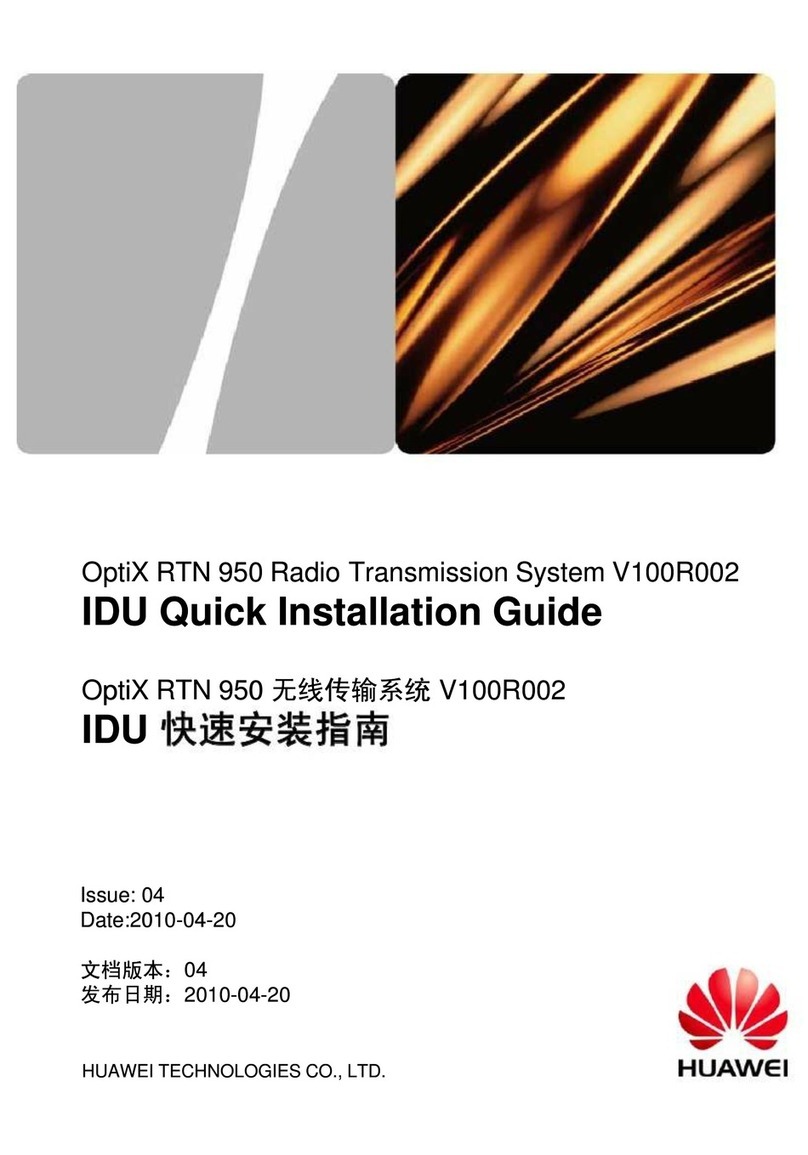
Huawei
Huawei OptiX RTN 950 User manual
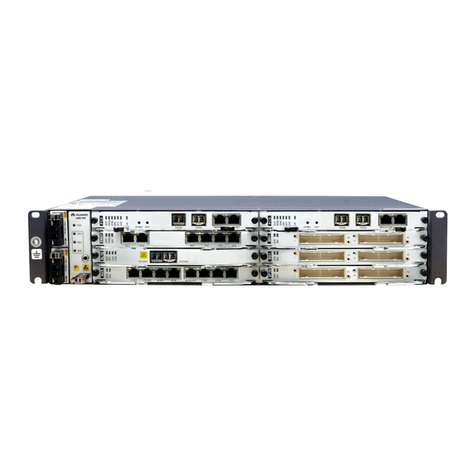
Huawei
Huawei OptiX OSN 550 User manual
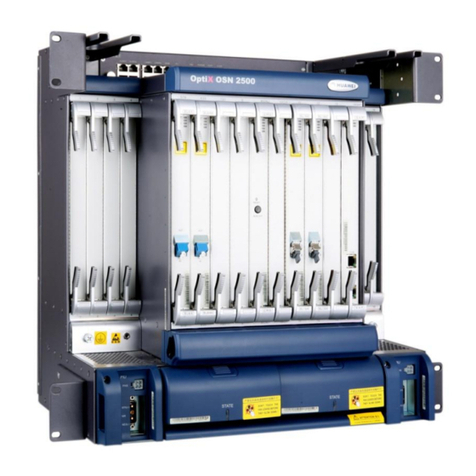
Huawei
Huawei OptiX OSN 2500 User manual
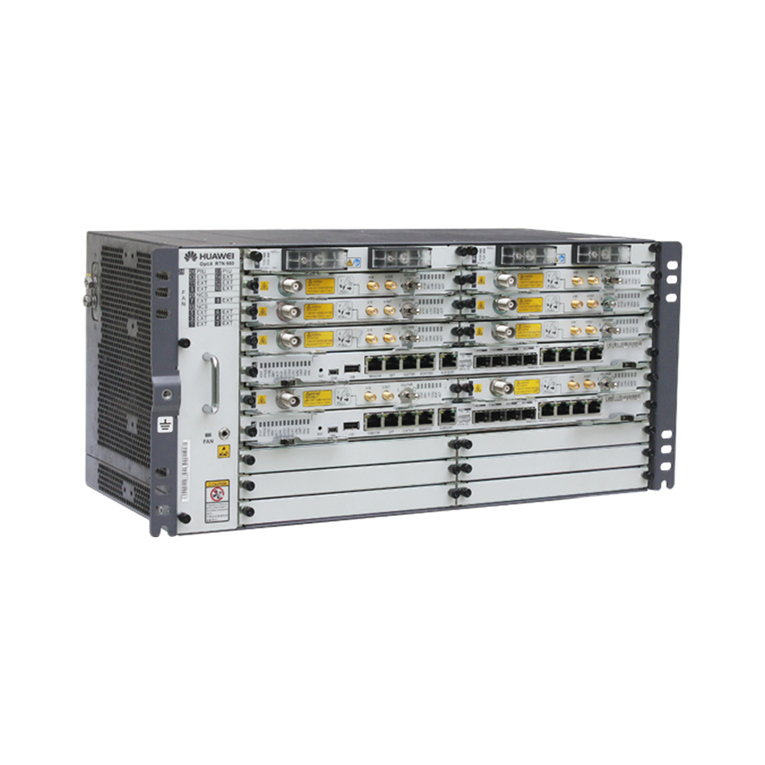
Huawei
Huawei OptiX RTN 980 User manual
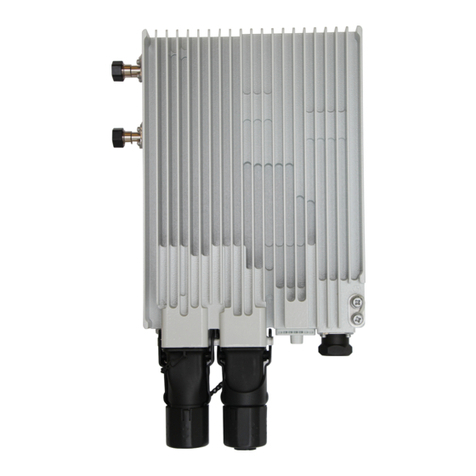
Huawei
Huawei OptiX RTN 320F User manual
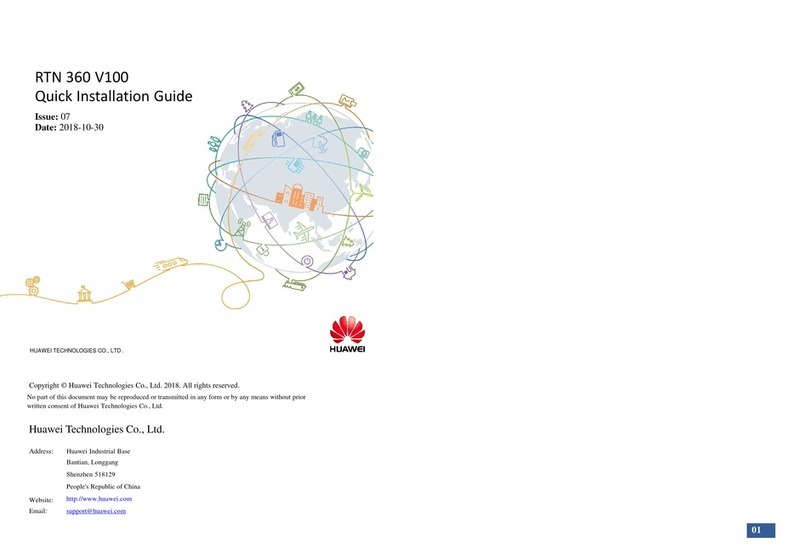
Huawei
Huawei RTN 360 V100 User manual

Huawei
Huawei OptiX RTN 600 Technical specifications

Huawei
Huawei OptiX RTN 980 User manual
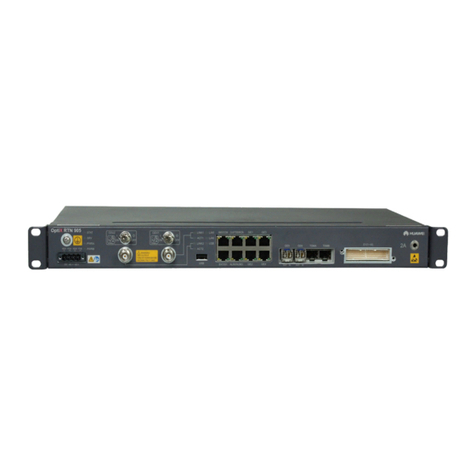
Huawei
Huawei OptiX RTN 905 User manual
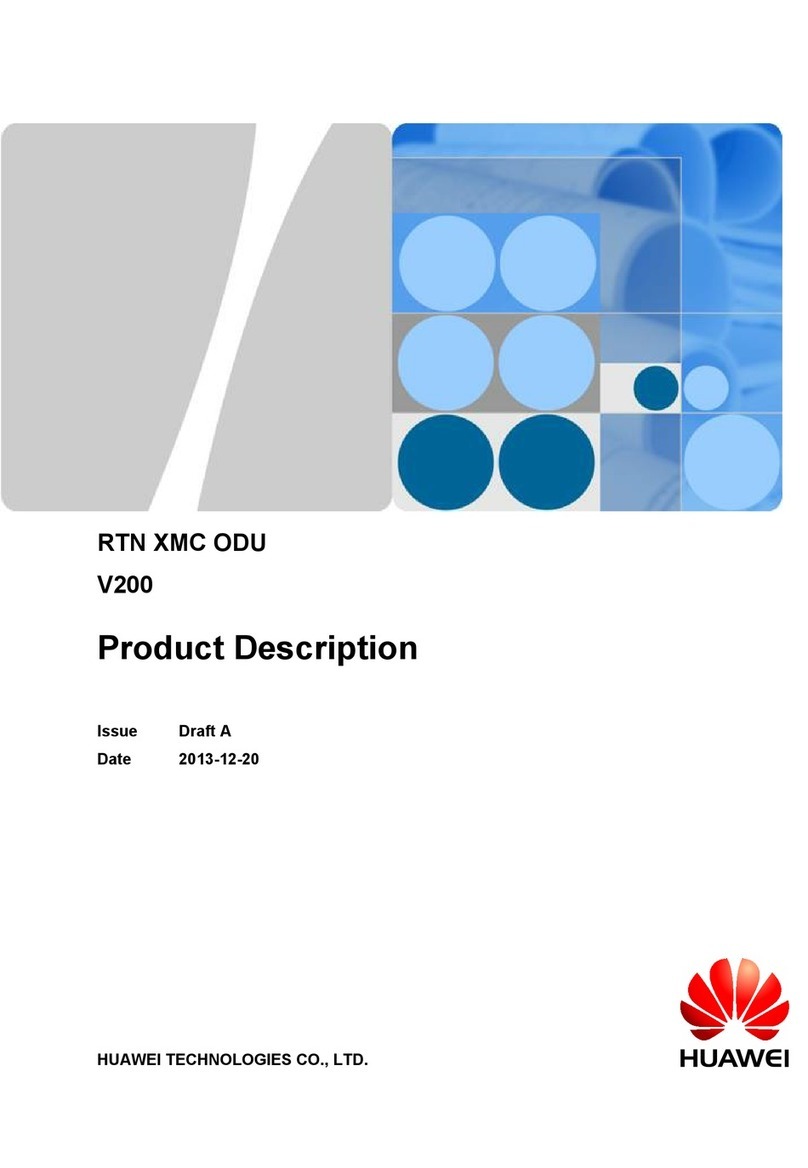
Huawei
Huawei RTN XMC ODU Technical specifications
